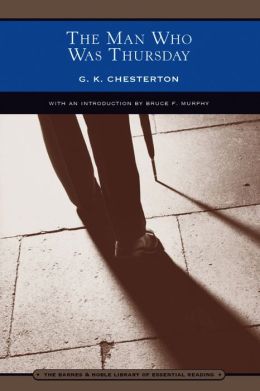[The above is mostly a
reading of the text below, with an occasional aside thrown in for good measure,
as they strike me as relevant. I welcome
questions, comments, or concerns about the material contained in this video.]
This was originally published in 1908 when Chesterton, one of the greatest Christian apologists of the first third of the twentieth century, was still a Protestant. He wouldn’t convert to Catholicism until the 1920s. Yet even as a Protestant, he had managed to do some wonderful writing, including “Orthodoxy,” his classic defense of the inner workings of Christian faith. However, I found this book to be less successful. The characters were so obviously meant to be symbols of something above and beyond themselves that it comes across more as a fable (or, as the subtitle has it, a “nightmare”) than a realist novel.
The main struggle Chesterton presents – relentlessly forced down your throat until you almost can’t bear it anymore – is that of anarchy versus order. Gabriel Syme (paladin of law and order) is a member of the Scotland Yard division that keeps an eye on political anarchists. He meets Gregory, an anarchist, at a party where they discuss what makes poetry poetic. Is it law, rationality, and reason – or disorder and anarchy? Syme suggests that Gregory is only a tongue-in-cheek anarchist, since he rightfully claims that total anarchy would never be able to accomplish its political goals. Gregory counters by offering to take Syme to an underground anarchist meeting to show him that they really do exist.
The rest proceeds almost predictably: we find that one member after another of the anarchist council is also working undercover as a member for the Scotland Yard. In fact, of the seven members (each named after a day of the week), five of them are discovered to be police officers. The first time or two this is surprising; by the fifth time, I was almost rolling my eyes. By the end, we find out that not even the leader of the group, Sunday, is an anarchist. Instead, he too has been a force for good.
In the end, everything comes off sounding like a paean to reason and rationality, but the message comes off as both heavy-handed and confused, as difficult as that is to imagine. Maybe it was the overt force of the message mixed with the phantasmagoric style on top of the need for Chesterton to turn absolutely into a symbol with some latent meaning. There were just too many things he was trying to do here, and none of them come off with any virtuosity.

No comments:
Post a Comment